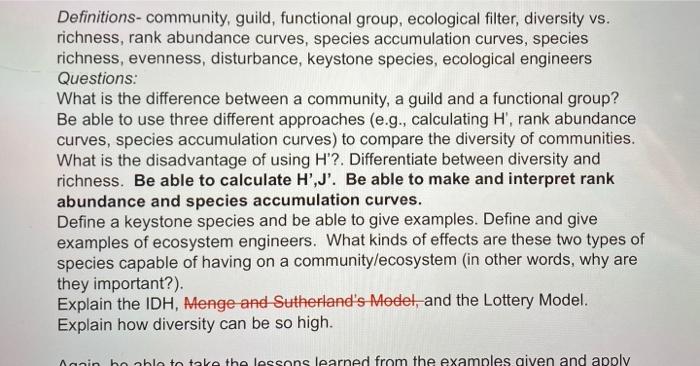
Material culture refers to the accumulation of artifacts, objects and other artifacts. Humans have been creating things for thousands of generations. These objects have been a part of our lives for thousands of years. Humans used them to express their feelings and communicate with one another. Certain artifacts are more valuable than others. They are the identity of a culture. Material culture has a long and rich history that goes back over ten thousand years.
Human experience is physically documented
Material history, or material culture, refers to the study and analysis of ancient objects. Material objects are often symbolic representations or abstract objects that have no apparent relationship with the material objects. Anthropologists believe that humans have a universal ability to classify and encode experiences symbolically. This ability evolved independently of biological evolution. A study of ancient artwork shows that people had the ability to create and use symbolic systems, which were shaped by their experiences.

Culture-created objects
Material culture, in its broadest sense, is anything that makes cultural activity visible in material form. This can be anything from artifacts and relics to textiles and buildings. Material culture can also include bridges, irrigation ditches and fences. Its impact is broad and changes with time, partly due to the material or symbolic expressions it creates.
Symbolic interactivity
The paradigm of symbolic interaction in material culture is a research method that studies the nature and dynamics of self and social interaction. The framework is particularly helpful for studies of the spatial and cultural fields. The theory claims that our behavior is determined by our interactions with objects, and that we learn meanings through a dynamic interpretive process. These are the key characteristics of symbol interactionism in material cultural. The definition of self is the first step in understanding how symbolic interactionism works within these fields.
Symbolic anthropology
Symbolic analysts see culture in terms of a system or meanings that can be applied for adaptive purposes. These meanings may be expressed in arbitrary forms such as symbols, or they may take on more concrete forms, such as the symbols etched into artifacts. Symbolic systems were created independently of biological evolution and allow humans to learn from others. This ability is contrary to the argument of nature versus nurture.

Symbolic archaeology
Symbolic archaeology is the study of the recurring assemblage of objects, tools, and symbols from a particular time and place. Archaeologists draw inferences from physical artifacts, even though there is no written record about ancient cultures. Archaeologists also use oral traditions, written history, and direct observations. Symbolic archaeology can be considered a sub-field of anthropology.
FAQ
How did pop music come into being?
It was an accident. The mistake that caused the first song to be written was when someone accidentally knocked a piano over while playing on New Years Eve 1920.
The recording company liked what they heard and decided to release it as a single.
This was the first hit single.
Pop music has been the most loved form of musical entertainment since then.
What is music's popular culture?
Popular Music Culture is a constantly-changing phenomenon that comes in many forms.
The use of certain music styles (e.g. jazz, rock) and lyrics is what defines popular music culture. It also includes the influence of visual media (e.g., film, television and fashion) on artists' careers.
It's also the way that fans interact with their favorite musicians.
One aspect of popular music culture is the rise of "superstars," artists who have achieved fame, fortune, and status for themselves.
These celebrities often transcend genres to become cultural icons. The evolution of popular culture has been influenced by their popularity.
Other elements of popular music culture include:
* The rise of recording technology -- from acoustic instruments and electric guitars to microphones and microphones.
* The inventions of the record player, the radio and other electronic devices.
* The birth of rock 'n roll.
* The introductions of film and television;
* The introduction of MTV and VH1
* The creation the internet.
What can pop culture teach us about ourselves?
Today's society values material possessions over all else. This is especially true with young people. They spend hours every day looking at screens. They look at screens and watch videos, as well as play video games and surf the Internet. All of these distract them from the task at hand, which is to complete school work. As a consequence, they often fail classes.
In today's world, everyone wants to be accepted. That means being popular. Popularity hinges on having money, clothing, and other possessions. This makes it easy for some people to do wrong.
We have become too dependent on technology. The internet has made it possible to access all sorts of information. Not everything is accurate. False rumors are floating around the Internet. These rumors spread quickly as people share them via social media. It's easy to post something without checking whether it's true.
People have lost their ability to think critically. They trust everything they read online. They trust what they hear on television and in magazines. They stop thinking about themselves. Instead, they follow others.
We lose control when we rely on other people to tell us what's up. Pop culture teaches that we should depend on other people. It can also make us lazy. We don't always see the truth, but it is there.
Who first coined the term Pop Music
Frank Zappa invented the concept. His style of music was described by Frank Zappa using the term pop music.
He said that his goal was to make music that is accessible to everyone. His music is called pop music because of this.
Zappa also invented the phrase "You Know It's Pop when ..."", which signifies that something is popular if there are many people who enjoy it. Michael Jackson's Thriller is one example of the greatest-selling albums.
Zappa's definitions of pop music are different than the current. Pop music encompasses all types of music. However, back then only certain music was considered popular.
Why is pop music popular?
Pop music is very much loved for its fun and joy! Pop music can make you feel happy and give you a feeling of freedom. Pop music allows people to be free from any limitations and think about only themselves. They don't have worry about what people think. This is why pop music is so loved. People enjoy listening to music that makes them feel good. If you're feeling down, you can always turn on the radio and hear some upbeat tunes. You might even find yourself singing along. Pop music has been a huge success over the years.
What are some positive features of pop culture?
There are some things about pop culture that aren't bad. Pop culture is a great source of entertainment. It also allows people to express their creativity. Pop culture can be used to promote artists' work.
In my opinion, the best thing about pop culture is that it brings people together. Everyone wants to watch the same shows. Everyone enjoys the same music. Everybody likes the exact same movies. Pop culture allows people to connect.
Not all pop culture is healthy. Many films glorify violence. Some programs on television make fun of those with mental disabilities. Others encourage their fans and followers to get high.
What can we do about pop culture's negative aspects?
We should try to avoid the negative parts of pop culture. It should not influence us. It can be a problem for our health. It can lead to crime. It can also affect our relationships.
Pop culture should be considered as a way to help or hinder society. Is it promoting good values? Are people being influenced into doing bad things?
Finally, let us ask ourselves whether or not we are happy in the world that we live. What do we enjoy about the music we listen too? What TV shows do you watch? The clothes we wear
If we care about our future, we must take responsibility for our actions. We need to decide what kind of world we want to live in. We can then choose the right pop culture.
What is pop culture?
Pop culture is all around. It's everywhere we go: TV, radio, film, music, magazines, newspapers, websites, social networks, etc. It surrounds us all day. It affects everything from music to clothing and food to politics and religion. What is pop cultural? Wikipedia states that pop culture refers to products and ideas designed for mass consumption. Many people assume that the term covers television shows, movies music, fashion and other forms entertainment. Pop culture is not just entertainment. Pop culture can be described as anything that is consumed by mass audiences, including video games, toys, clothing and fast food.
Statistics
- [17][18][19]Definition[edit]According to author John Storey, there are various definitions of popular culture. (en.wikipedia.org)
- For example, the term hater meaning someone who strongly undermines or criticizes others, often due to pathetic jealousy, likely emerged from hip hop culture, such as the term playa hateras, used by influential rapper Biggie Smalls as early as 1995. (simplicable.com)
- In 1987, US films captured 56% of the European film market. (socialsci.libretexts.org)
- Less than a decade later, that statistic rose to 90% (Dager, n.d.). (socialsci.libretexts.org)
- Yet a Nielsen study shows they account for 42% of the country's most-watched content on streaming services. courtesy Nielsen (npr.org)
External Links
How To
What is pop culture in movies?
Popular Movies Culture covers all aspects of entertainment, including books, magazines and newspapers, television programs, websites, TV programs, websites, blogs and social media.
Movies can be classified into different types: comedy/drama, horror, action/adventure. Fantasy, science fiction. Romance, thriller. Animation.
Movie plots generally follow a pattern of predictable events that conclude with a satisfying resolution.
Films' success is dependent on how closely they follow this formula.
Here are some common plot points:
-
A protagonist who has to overcome obstacles in order achieve his/her goal.
-
An antagonist that opposes your protagonist throughout the film.
-
A moral dilemma that forces the protagonist to make a choice.
-
A twist ending that transforms everything
If your story doesn't fit into one of these categories, you may need to reevaluate your concept or outline before you begin writing.
You'll want to pay special attention to the following questions:
-
How do I establish my setting?
-
What does my protagonist want?
-
Why should readers care so much about my story?
-
Where is my story taking me?
-
Who is my main character
-
Will there be conflict?
-
What is the climax
-
What is your resolution?
-
Is the end happy or sad?
-
Do I want to introduce characters?
-
Do I have multiple settings in my story?
-
Is there a subplot?
-
Are there key themes?
-
Can I tell a complete tale in just one chapter?
-
How effective am I using dialog?
-
Is it clear and concise in my language?
-
Does my vocabulary match the context?
-
Have I used an active voice over a passive one?
-
Are there any spelling mistakes?
-
Is my grammar correct?
-
Are there too Many Adverbs?
-
Do you have any suggestions?
-
When I'm done editing, what is my first impression?
Your job is more than just to write a book. It is also about getting it published.